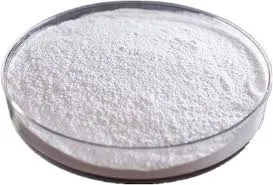
Tach . 18, 2024 19:05 Back to list
what is hpmc
What is HPMC?
Hydroxypropyl Methylcellulose (HPMC) is a semi-synthetic polymer derived from cellulose, a natural polymer found in the cell walls of plants. This versatile substance has gained considerable attention in various fields, including pharmaceuticals, food processing, cosmetics, and construction materials, due to its unique properties and functionalities. Understanding HPMC's properties, applications, and benefits can shed light on its significant role in these industries.
Chemical Structure and Properties
The chemical structure of HPMC consists of a cellulose backbone that is modified by the introduction of hydroxypropyl and methoxy groups. This modification enhances its solubility in water and various organic solvents, making HPMC a valuable excipient in pharmaceutical formulations. It is odorless, tasteless, and non-toxic, which further adds to its versatility and safety for human consumption.
HPMC exhibits several advantageous properties that contribute to its wide application range
1. Thickening Agent HPMC is an effective thickening agent, providing viscosity to liquid formulations. This property is utilized in various products, from lotions to sauces, improving texture and stability.
2. Film-forming Ability It can form transparent films when dried, making it suitable for coatings in both food and pharmaceutical applications. This film-forming property helps protect active ingredients, prolong shelf life, and enhance appearance.
3. Water Retention HPMC has excellent water-retention properties, which are crucial in applications like construction and agriculture, where moisture retention is necessary for various processes.
4. Stabilization It acts as a stabilizer in emulsions, preventing separation and maintaining consistency in products such as creams and ointments.
5. Controlled Release In pharmaceuticals, HPMC is widely used in controlled-release formulations, allowing for the gradual release of drugs over an extended period, improving therapeutic effects and minimizing side effects.
Applications of HPMC
what is hpmc

The diverse properties of HPMC have led to its use in several industries
1. Pharmaceuticals HPMC is commonly used in tablet formulations as a binder, disintegrant, and coating agent. It is key in producing extended-release formulations, ensuring that medication is released in a controlled manner.
2. Food Industry In food processing, HPMC serves as a thickening agent, emulsifier, and stabilizer. It is widely used in products like ice cream, salad dressings, and sauces to improve texture and mouthfeel.
3. Cosmetics HPMC's film-forming and thickening properties make it a popular ingredient in cosmetic products such as gels, creams, and lotions. It helps enhance the texture and stability of these formulations.
4. Construction In the construction industry, especially in dry-mix mortars, HPMC functions as a water-retention agent, allowing for extended working time, better adhesion, and improved workability of mortars and plaster.
5. Agriculture HPMC can be used in agricultural applications as a soil conditioner and in seed coatings to improve germination rates and water retention in soil.
Benefits of Using HPMC
HPMC offers numerous advantages that make it a preferred choice across various applications. Firstly, its non-toxic and biodegradable nature aligns well with modern sustainability practices, making it an environmentally friendly option. Furthermore, its compatibility with a wide range of other ingredients enhances formulation flexibility. The versatility of HPMC allows manufacturers to create high-quality products while meeting diverse consumer needs.
Additionally, the use of HPMC in pharmaceuticals and food products has become increasingly relevant in the context of health and wellness. Its ability to modify the release profiles of active ingredients leads to improved therapeutic efficacy, which is crucial for patient compliance and satisfaction.
In conclusion, Hydroxypropyl Methylcellulose (HPMC) is a multifunctional polymer with a broad spectrum of applications across various industries. Its unique properties make it indispensable in formulating products that require stability, texture, and controlled release. As industries continue to seek innovative and sustainable solutions, HPMC stands out as a key ingredient that contributes to enhancing product performance and catering to modern consumer demands. With ongoing research and development, the applications of HPMC are likely to expand even further in the future.
-
Unlocking the Benefits of HPMC Products: A Gateway to Versatile Applications
NewsAug.07,2025
-
Unleashing the Potential of HPMC Ashland: A Comprehensive Look
NewsAug.07,2025
-
Tile Bonding Cellulose: The Key to Superior Adhesion and Durability
NewsAug.07,2025
-
Hydroxypropyl Methylcellulose Powder: The Versatile Component in Modern Pharmaceuticals
NewsAug.07,2025
-
Hydroxyethyl Cellulose: The Versatile Solution for Various Industries
NewsAug.07,2025
-
Hydroxyethyl Cellulose (HEC): The Versatile Polymer for Various Applications
NewsAug.07,2025







